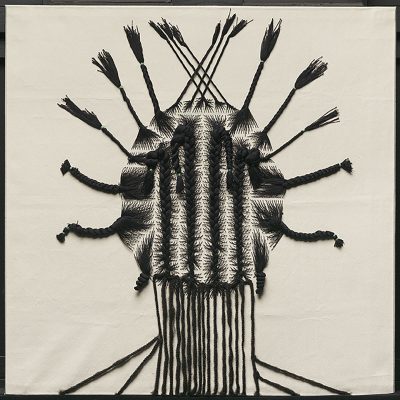In 1928, in Mexico City, a woman sets the visage of two women she’s known all her life to canvas. Surrounded by foliage, and circled by two butterflies, maids Salvadora and Herminia were cemented in art history. The artist was Frida Kahlo and the painting was Dos Mujeres (Salvadoa y Hermenia), the first painting the famed artist ever sold. It is just one of many significant pieces of art on display by women in a new exhibit at the Museum of Fine Arts, Boston.

August marked the 99th anniversary of the ratification of the 19th Amendment, which gave women the right to vote in the U.S., and the MFA has been working to pay homage to underrepresented women who changed art in an effort to include more “diversity, inclusion, and gender equity” in their exhibits, according to the museum’s website.
Nonie Gadsden, the Katharine Lane Weems senior curator of American decorative arts and sculpture at the MFA, coordinated a cross-departmental curatorial team for the exhibition. The exhibit titled “Women Take the Floor,” is a complete “takeover” of its Art of The America’s wing that previously had been dominated by male artists, according to the museum’s website.
The collection builds on the work of feminist activism by exhibiting more than 250 works from female artists that the museam finds are often overlooked or underappreciated. The exhibit is expected to open Sep. 13 and close May 3, 2021.
All the works are organized into seven themed galleries that focus on the marginalized experiences of women and span across a century. The exhibition features works from innovative and prominent artists like Georgia O’Keeffe, Sheila Hicks, Frida Kahlo and Esphyr Slobodkina.
Marielis Perez, a sophomore in the College of Communication, said she has never seen an exhibit like this before.
“I think it’s kind of cool,” Perez said, “and just the fact that they’re trying to represent women artists that lack the same representation as other male artists even now in 2019.”
Martina David-Ault, who has been an MFA tour guide and educator for more than 30 years, said women are often left out of classical art history books, using the late Berthe Morisot, a Parisian impressionist painter from the 19th century, as an example as to why their artistic talents are not recognized.
“Berthe Morisot was known to people who study art history. But she never had a whole show and everybody was surprised,” she said. “It certainly is in the time that now, suddenly, women and women artists get much more attention. Plus, people are surprised by how good they are.”
Melanie Hall, director and associate professor of museum studies at BU in CAS, said while there have been significantly more exhibitions curated for male artists in the past, museums have begun to become more inclusive.
“Many more women make great and vital works of art and museums are now looking to reflect this,” Hall said.
This is not only being reflected in the U.S., but in Europe as well. Earlier this year, Tate Britain, a museum in London, opened a new exhibition called “60 Years” which celebrates the centennial anniversary of women gaining the right to vote in the U.K. by showing 60 works of art from female artists dating from the ‘60s up to the present.
“Women artists are now beginning to feature in museums and thinking and planning in ways that perhaps they haven’t done in the past,” Hall said. “Now museums are waking up to the fact that there are more women artists and that there are a lot of women who are visiting museums.”
With the MFA’s “Women Take the Floor” and Britain Tate’s “60 Years,” museums are shifting towards a female audience that has always been present, Hall said, and who deserve to have their experiences shared across different mediums of art.
“Museums know that they’ve got a lot of catching up to do where women are concerned,” she said. “The fact that the MFA is launching a show devoted to women artists is a sign of this and this phenomenon but we have to wait and see if it’s a new trend.”
















































































































